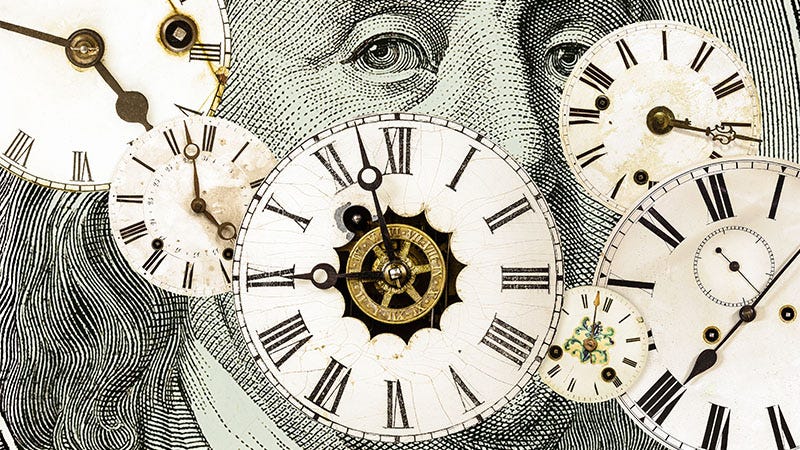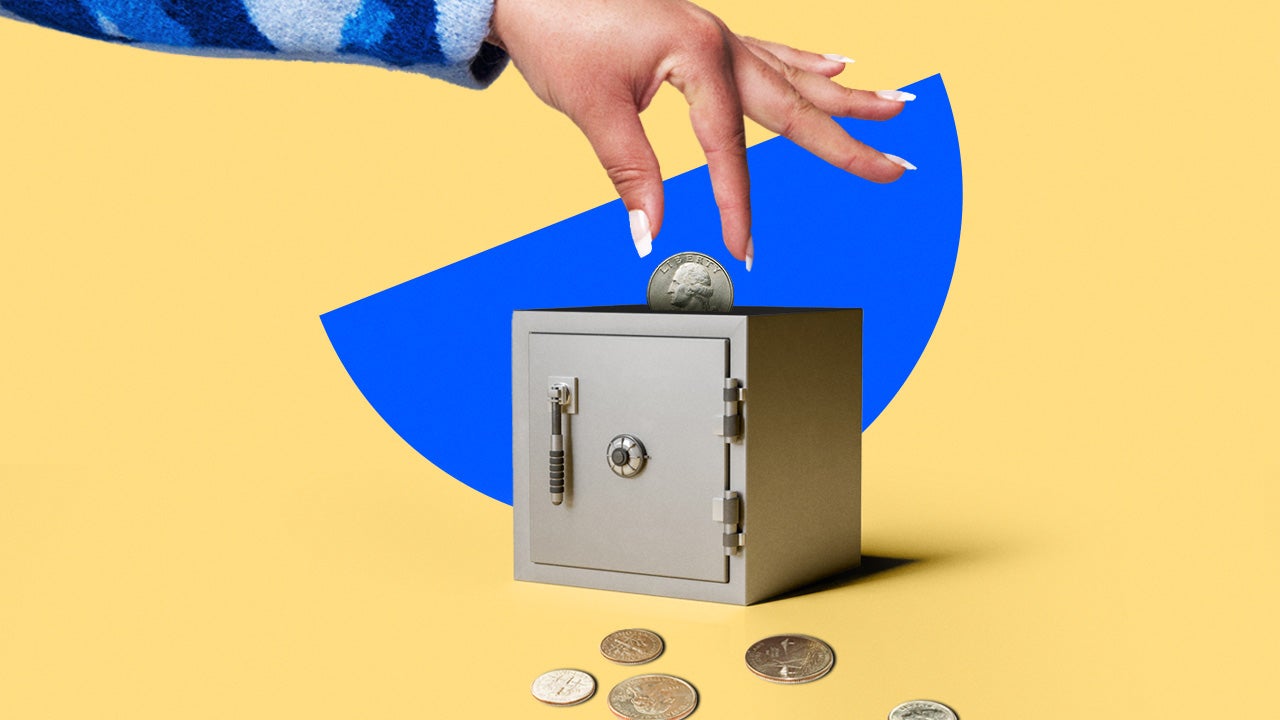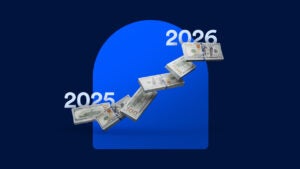Historical CD interest rates: 1984-2025

Certificates of deposits (CDs) continue to be worth considering as a component of your savings strategy in 2025. Yields on competitive CDs increased to historic highs in recent years, thanks to the Federal Reserve raising its benchmark rate 11 times in 2022 and 2023.
Although the Fed has cut rates three times in recent months, yields on competitive CDs remain higher than they’ve been in more than a decade, outside the current rate cycle.
“The Federal Reserve raised interest rates at the fastest pace in 40 years during 2022 and 2023 in an effort to rein in inflation, with savers seeing the best returns on savings accounts and CDs in more than a decade,” says Greg McBride, CFA, Bankrate chief financial analyst.
Nearly 40 years ago, CDs were considered great investments. The average annual percentage yield (APY) on a one-year CD was over 11 percent.
But starting in 2009, in the aftermath of the Great Recession, average rates on shorter-term CDs were middling below 1 percent APY. And in the wake of the COVID-19 pandemic, the average yields for all CD terms, including 5-year CDs, plunged below 1 percent APY.
But in early 2022, CD rates started to climb back up with the onset of Fed rate hikes. APYs peaked in late 2023, before seeing some declines as banks anticipated the Fed would lower its benchmark rate in 2024.
In January 2025, the average one-year CD has an average of 1.95 percent APY. The most competitive banks are offering APYs of up to 4.40 percent on one-year CDs.
Here’s a look at the historical ups and downs of CD rates and some background on rate fluctuations through the decades.
CD rates in the 1980s
The U.S. faced two recessions in the early 1980s. That’s when CD yields peaked. On average, three-month CDs in early May 1981 paid about 18.3 percent APY, according to data from the St. Louis Federal Reserve.
The reason interest rates were so high in the 1980s was due to high inflation. With inflation, the cost of goods and services rises and your money doesn’t buy as much. And so, while savers enjoyed higher rates on their CDs, their spending power took a hit.
“Interest rates were significantly higher in the early 1980s as the Federal Reserve, led by Paul Volcker, used high rates to corral double-digit inflation,” McBride says.
CD rates in the 1990s
Following another short recession in the early 1990s, conditions improved and inflation fell. Overall, the decade was marked by a solid economy.
“CD yields dropped in the early 1990s following a recession and on the heels of the Fed’s efforts a decade earlier to break inflation,” McBride says. “Yields stabilized in the second half of the decade amid a sustained economic expansion.”
CD rates in the 2000s
In early 2000, after the dot-com boom began to lose steam, the economy started to slow and the Fed lowered interest rates to stimulate the economy.
The average yield on one-year CDs fell below 2 percent APY in 2002, Bankrate data shows.
In September 2009, following the global financial crisis, the average one-year CD paid less than 1 percent APY. Average rates on five-year CDs were only slightly higher — about 2.2 percent APY.
Other rates fell, too, as the central bank slashed its benchmark interest rate.
“This decade was bookended by recessions, both of which brought about record-low interest rates for their time,” McBride says. “In the middle was a housing boom and 17 interest rate hikes by the Fed that produced a camel-back look to the trend in CD yields.”
CD rates from 2010 to 2020
The Federal Reserve’s efforts to stimulate the economy following the Great Recession of 2007-2009 left many banks flush with cash, so they didn’t need to boost rates on CDs to obtain money for lending.
CD yields reached historic lows. In June 2013, average yields on one-year and five-year CDs were 0.24 percent APY and 0.77 percent APY, respectively, according to Bankrate data.
“CD yields continued to fall in the years following the Great Recession as the Federal Reserve kept benchmark interest rates at near zero amid a sluggish economic recovery,” McBride says.
As the Fed gradually increased its benchmark interest rate between December 2015 and 2018, savers started to benefit.
“The Fed raised interest rates nine times between 2015 and 2018 before beginning a reversal of course in the second half of 2019 in an effort to sustain what by then was a record-long economic expansion,” McBride says.
Then, the COVID-19 pandemic struck in early 2020, causing a worldwide economic earthquake.
“When COVID-19 shook global economies, the Fed quickly brought benchmark rates to near-zero levels to provide fuel for a recovery,” explains McBride.
CD rates since 2020
In March 2020, the Fed made a couple of emergency rate cuts as a result of the economic lockdowns brought on by the COVID-19 pandemic.
Here’s how CD rates fell in the year after those emergency rate cuts of 2020 were made:
- From June 2020 to June 2021, the average one-year CD dropped to 0.17 percent APY from 0.41 percent APY.
- From June 2020 to June 2021, the average five-year CD fell to 0.31 percent APY from 0.6 percent APY.
“CD yields fell to new record lows when interest rates were slashed to near-zero levels in the early stages of the pandemic,” says McBride.
However, average CD rates shot up in subsequent years. In June 2021, one-year CDs averaged 0.17 percent APY and five-year CDs averaged 0.31 percent APY. In September 2023, one-year CDs averaged 1.92 percent APY and five-year CDs averaged 1.29 percent APY.
This was largely due to the fact that the Fed hiked rates 11 times in 2022 and 2023, incentivizing banks to charge more on loans while also paying out more on savings products, including CDs. (The federal funds rate has an indirect effect on CDs.)
Bankrate’s rate survey data as of Jan. 22, 2025 shows:
- The national average one-year CD yield was 1.95 percent APY.
- The national average five-year CD yield was 1.42 percent APY.
CD rates have decreased from their current-cycle peak in 2023. But CDs and savings accounts are still outpacing inflation.
“Interest rates have pulled back from the high levels enjoyed over the past couple years, but all is not lost for savers,” McBride says. “The top-yielding savings accounts and certificates of deposit should continue to pay returns exceeding the rate of inflation for the foreseeable future, even as interest rates come down.”
Savers can get closer to bridging the gap between inflated costs and savings yields by comparing top CD options to find the highest rate on a term that fits their needs.
Bottom Line
Despite fluctuating rates over the years, CDs once again proved to be a worthy investment in 2024, and they’re worth considering for savers in 2025. Although the Fed has been lowering interest rates — after bringing them to a 23-year high — APYs on competitive CDs remain well above the current rate of inflation. To make the most of high APYs, it’s important for savers to compare top CD options and find the highest rate for their needs.
* In June 2023, Bankrate updated its methodology that determines the national average CD rates. However, the data in this article’s graphs is based on historical data from Bankrate’s previous methodology.






